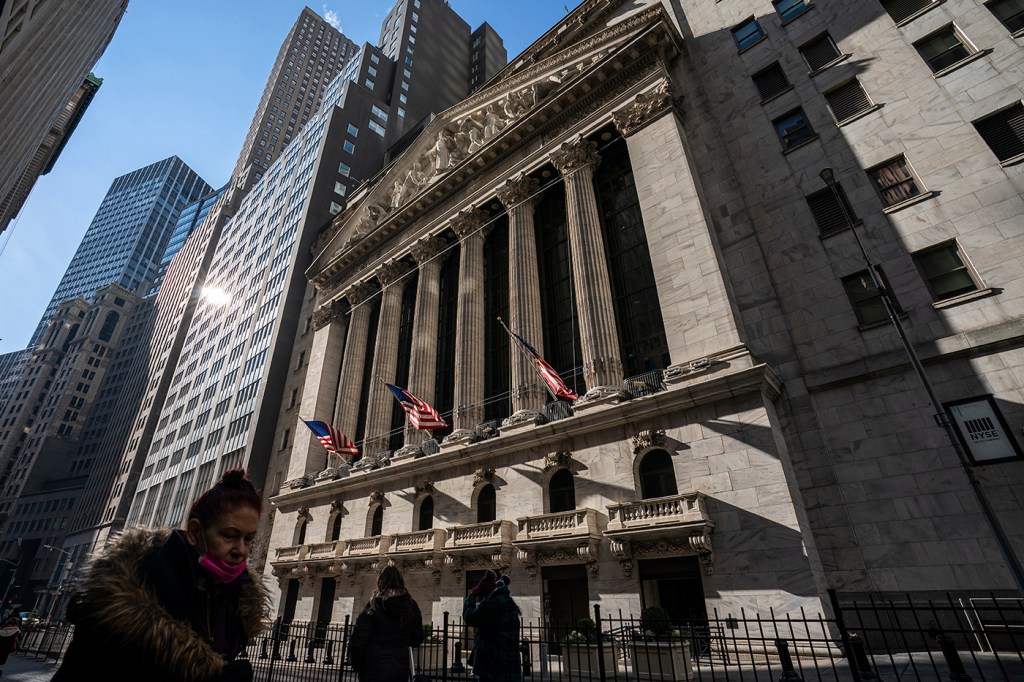What is causing inflation?

The COVID-19 pandemic and resulting supply chain shortages have contributed to the highest U.S. inflation rate since the 1980s, resulting in a reporter’s question about the impact of rising prices that elicited a curse this week from President Joe Biden.
The consumer price index has increased 7% over the past 12 months, driven in part by stimulus checks that fed the economy during the low points of the pandemic, notes Robert Triest, chair and professor of economics at Northeastern.
The United States and other governments “pumped a lot of money into their economies in order to prevent economic collapse as the pandemic started,” says Triest. “Those government policies, both on the fiscal side as well as the monetary side, were extraordinarily effective.”
The pandemic also caused supply chain issues that have contributed to a higher demand for goods, he adds.

Inflation on its own doesn’t necessarily cause problems for the economy, says economics professor Bob Triest. Photo by Matthew Modoono/Northeastern University
“So the combination of the government support and supply chain bottlenecks has resulted in inflation,” says Triest, a former vice president and economist at the Federal Reserve Bank of Boston. “That’s not necessarily indicative of a government mistake, because the economy actually performed quite well. We didn’t have an economic collapse.
“It’s a judgment call whether there was too much support of the economy, or whether they hit it about right,” says Triest. “But we are suffering inflation as a consequence.”
Is inflation a sign of greater problems to come, or will a renewal of healthy supply chains stabilize the U.S. economy? Triest spoke with News@Northeastern about the causes of (and reasonable responses to) the current bout of inflation. His comments have been edited for brevity and clarity.
How would you gauge the performance of the economy overall?
Inflation on its own doesn’t necessarily cause problems for the economy. Right now the fear is that the Federal Reserve will overreact to inflation and potentially cause a recession. I don’t think that’s going to occur, but I think there’s some fear of that.
That’s what happened in the late 1970s, when Paul Volcker was appointed as chair of the Federal Reserve with a mission to reduce the inflation rate—and the Federal Reserve did so quite successfully. But the consequence of that was two recessions, one after the other, that were quite severe.
Why are you optimistic that history won’t repeat itself?
We’re not in an inflationary period like we had in the late 1970s, early 1980s.
For one thing, the inflation rate is associated currently with largely transitory factors. And, before the inflation rate becomes ingrained in the economy, the Fed is taking appropriate measures to to contain inflation in a way that will prevent the inflationary expectations from building high inflation into the future.
What is the role of psychology in this? Does inflation happen in part because people are anticipating it?
If businesses anticipate future inflation, then when they adjust their prices, they’ll do so anticipating that their costs will increase in the future. Similarly, employees, when negotiating pay packages, will take into account future inflation.
Right now, it appears that inflationary expectations are quite well contained. And so that’s quite different from the late 1970s. We really are facing a much less severe problem right now.
The Federal Reserve is expected to begin raising interest rates for the first time in three years. In addition to such measures, are there market forces in play that might help mitigate inflation?
Firms have a profit incentive to resolve the supply chain issues. Everybody expects that as time goes on, those supply chain issues will resolve themselves. They’re not a permanent feature of the economy—though a lot of that depends upon the course of the pandemic. We’ve found that the pandemic is even harder to forecast than the economy.
One other thing I would mention is that the fiscal stimulus—those bonus checks that went out last spring—are not continuing. Eventually that extra money will be spent, and that will reduce aggregate demand.
What are your expectations going forward overall?
The consensus view of economists, including myself, is that the inflation rate for calendar year 2022 will be substantially lower than for 2021.
The unemployment rate has fallen to 3.9%, which is quite low and consistent with what economists generally think of as close to full employment. On the other hand, total employment is still substantially below what it was pre-pandemic. That’s due to the reduction of labor force participation associated with the pandemic, and people really don’t know to what degree that reduction in labor force participation is permanent.
That’s one reason for the Fed to be cautious and not be tightening too much, because they don’t want to choke off opportunities for labor force participation to increase.
What are the most important units of measurement for gauging inflation over the months to come?
It used to be that economists would try to gauge the unemployment rate to determine whether the economy was becoming overheated. That doesn’t really work in this situation, because the main driver of the current increase in inflation is the supply chain problem.
And so we need to look at a pretty wide variety of indicators. It might be things like whether there are still ships being backed up at ports waiting to be unloaded, and whether businesses are facing long lead times in getting parts and material for production.
When I go into my local bike store and find that I can order parts without hearing, “No, we don’t have that brand because they’re so backed up”—then I’ll start thinking that the supply chain problems are easing.
For media inquiries, please contact Marirose Sartoretto at m.sartoretto@northeastern.edu or 617-373-5718.






